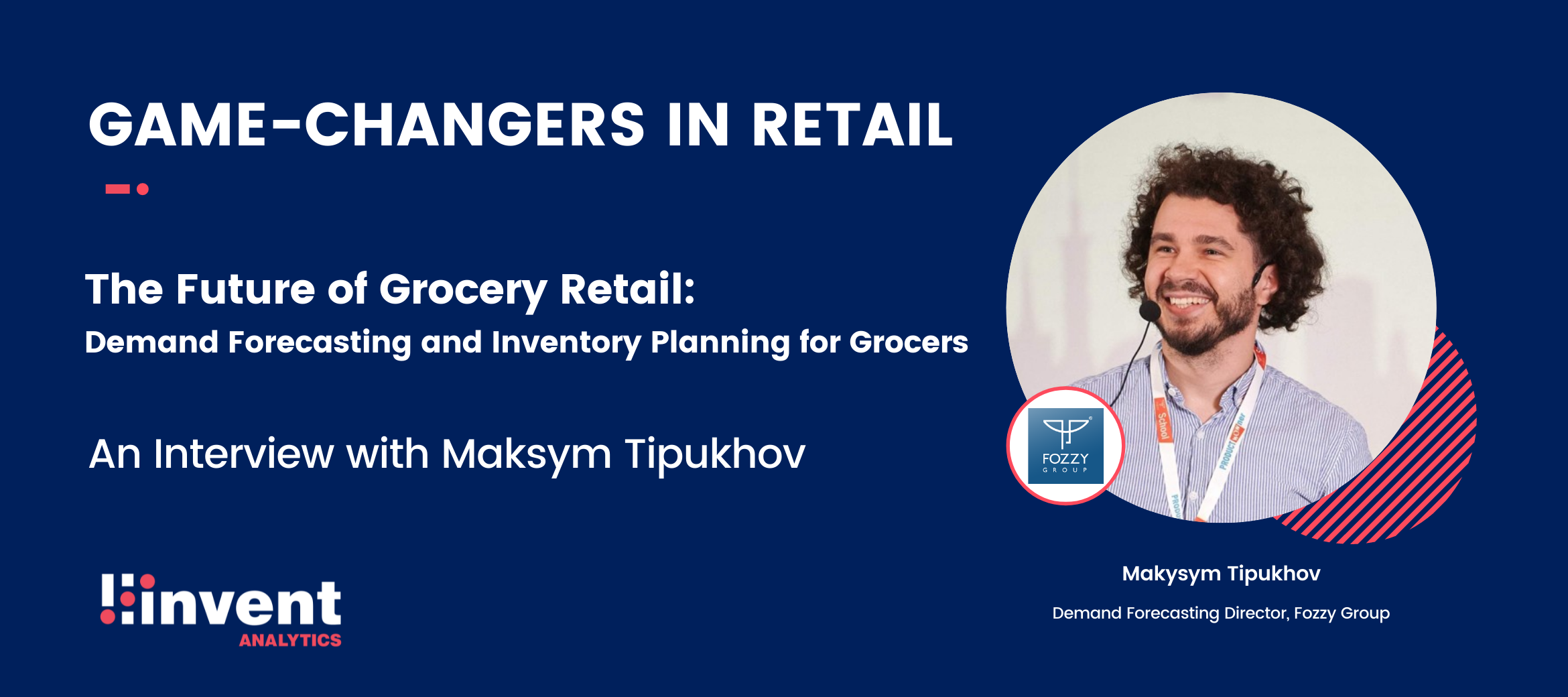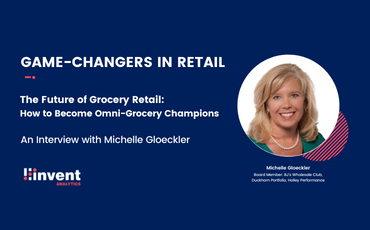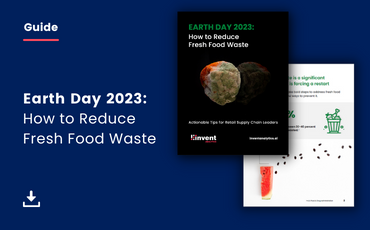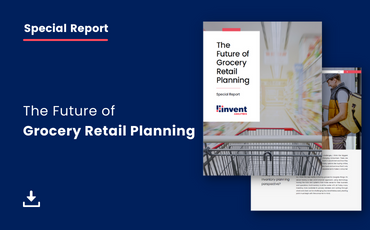
The Future of Demand Forecasting and Inventory Planning for Grocery Retailers
Game-changers in Retail: An Interview with Maksym Tipukhov, Demand Forecasting Director, Fozzy Group
We are all living in a very different world than we were just a year ago. The grocery retail landscape is rapidly changing, and the majority of the changes incorporated in the industry are technology and customer-requirement-driven. In this Game-changers in Retail interview, we met with Makysym Tipukhov, Demand Forecasting Director, Fozzy Group, to discuss the future of grocery retail and how grocers can thrive in this new omni-channel era.
What do you think today’s consumers expect from omni-channel grocers?
Today, consumers are setting high standards for how they want to shop. They demand frictionless, fast, and comfortable shopping experiences 24/7. And as we all know, consumers’ lives are increasingly centered around their smartphones and tablets. So, they also want to have the flexibility to order their groceries online using the website or applications. I observe these evolving consumer expectations in Ukraine, but I think the same applies to all consumers worldwide.
What should grocery retailers do so well to meet the expectations and win in an increasingly competitive space?
Customer-centricity is becoming the new game in town, requiring grocery retailers to prioritize the customer experience. To win in this new competitive space, retailers need to create 5-star personalized customer experiences and provide special offers. In addition, they need to quickly adapt to the new omni-channel world and leverage new technologies to serve them better. In other words, if grocers give their customers positive experiences, they will continue to do shopping with them and even recommend them to others.
What do you consider to be the biggest challenges for grocery retailers today from an inventory planning perspective?
I would say the biggest challenges grocery retailers face today revolve around e-commerce. Rising customer expectations for omni-channel shopping are creating new challenges and opportunities for retailers. Today, when shoppers go online, they expect a similar if not the same experience as one they would get in a brick-and-mortar grocery store. And that’s why grocers must rethink how they manage their inventories and how they do the planning to meet the demand of omni-customers across all touchpoints.

How do you see the online shopping vs. physical store shopping experience in the near future?
Remember the times when Kindles were first released? It was like the next big thing. And years later, the e-book market continues to grow, but it doesn’t mean that people prefer reading e-books only. For most people, old-school print on paper still wins, and the reason for that is some people like to smell of the books, the others want to touch them and take a look at the pages or get bookmarks. I think the same applies to the grocery shopping of today.
Even though more and more people prefer to do their shopping online due to its convenience, physical stores are still valid, and the in-store experience is here to stay. A large percentage of retail still happens in physical stores. That’s partly because shopping is a part of the culture and it brings joy to shoppers. For example, at Silpo, our customers can go to a theatre inside the store or dive into the world of books and movies and have a great time there. They can also taste delicious pizza at the restaurant right in the supermarket or eat their favorite rib-eye steak. So basically, it’s much more than just shopping, it really is an experience.
So I think at the end of the day, we will see 80% physical in-store shopping and 20% online shopping in the post-pandemic world. During the pandemic period, online shopping will definitely be stronger. I believe retailers need to think holistically and carefully about finding the balance between e-commerce and traditional shopping. They need to make sure they offer the best grocery-shopping experiences through customers’ preferred channels at the right time, whether it is the online or brick-and-mortar store.
In achieving a best-in-class customer experience, all the functions of a retailer should work hand in hand. Customer experience is not only about having nice stores or friendly store employees. It also requires high availability, freshness in products, competitive prices and promotions, optimal assortment, etc.. That’s why supply chain and planning teams are also very critical in contributing to superior customer experience.
How do you see the role of dark stores or micro-fulfillment centers in grocers’ fulfillment strategies?
I don’t think dark stores have a “role”. They practically take center stage now. In today’s “quick delivery market,” any grocery retailer who wants to stay ahead of the game needs to have dark stores. I see them as the only effective way in grocers’ fulfillment strategies.
What do you think are the 3 key things grocers need to do to optimize their supply chain capabilities to differentiate themselves from their competitors and meet their financial goals?
In today’s market, transparency is the new gold standard. Grocery retailers need to make sure that their business processes are transparent and clear. Transparency in a business generates better performance, it builds trust and improves efficiency.
Secondly, grocers need to implement AI/ML-based solutions anywhere where it’s possible and makes sense. These solutions hold the key to any retailer’s success in winning, serving better and retaining their customers. So, they should leverage the power of AI and advanced analytics to improve their operations, reduce costs and increase sales.
Lastly, grocers need to prioritize environmental responsibility and focus on waste reduction and eco-friendly initiatives. While optimizing their supply chain for efficiency, they should also reduce waste by successful planning. Today, machine learning and advanced analytics technologies can be very helpful in addressing these issues.

How important do you think it is to make granular, data-driven forecasts in the omni-grocery era?
In one word: Critical.
Retailers need to make granular, data-driven forecasts to survive and thrive in the omni-channel world of retail. There is no other optimal option. They need to leverage a successful demand forecasting solution’s advanced capabilities, such as quick simulations, forecast horizons, cost optimizations, and real-time parameters considered by the system.
What do you consider as the biggest challenge in omni-channel demand forecasting?
I would say the biggest challenges in omni-channel demand forecasting include the data cleansing process, data validation, and master data support. On top of that, retailers should utilize AI/ML-based demand forecasting systems to incorporate weather impacts, cannibalization-halo effects in between products, competitor cannibalization, and so on. However, even those are not enough for the new world of omni-channel retailing. For example, while making a forecast for a store-SKU, retailers should consider the physical demand at the store, and they should take into consideration online sales that would be fulfilled from stores.
What do you see as the 3 top benefits of accurate demand forecasting for grocers?
By accurately forecasting demand, grocers can position inventory at the right amount at each location. In addition, they can take advantage of forecast horizons to reduce warehouse and transportation costs. Lastly, I would say accurate demand forecasting helps to reduce waste, inventory write-offs, and markdown losses.
What do you think is the most effective way for grocery retailers to improve availability and reduce waste?
Improving availability is a critical element of delivering excellent customer service. However, achieving high levels of availability without holding high inventory levels is challenging, so grocers working to improve availability and reduce waste need to be creative. They should focus on their business operations and take advantage of AI/ML-based solutions and mathematical models and algorithms. Planning for fresh items requires different logic. Retailers should consider the shelf life of each SKU, remaining expiry days, consumer habits - LIFO ratio, waste probabilities and, balance it with lost sales by also considering product margins.
What do you think will be key trends shaping the grocery industry in the coming years?
Firstly, e-commerce will continue its march. Pandemic accelerated the shift towards e-commerce, and I believe we’ll see it rising in the future. There will be more quick delivery services as more customers enjoy the convenience of the doorstep experience. Lastly, I think we’ll be seeing more marketplace platforms in the coming years.
Finally, what do you think should be the top 3 inventory planning strategies for grocery retailers who want to become the Omni-Grocery Champions of tomorrow?
The Grocery-Champions of tomorrow will be the ones who focus on just-in-time delivery, make successful planning using the right customer decision trees, and proper promo planning based on personal propositions.
Thank you Maksym.
Did you enjoy reading this? You might also be interested in reading Omni-Channel Choices for Retailers' Success Today and Tomorrow, and The Future of Grocery Retail: How to Become Omni-Channel Grocery Champions.



